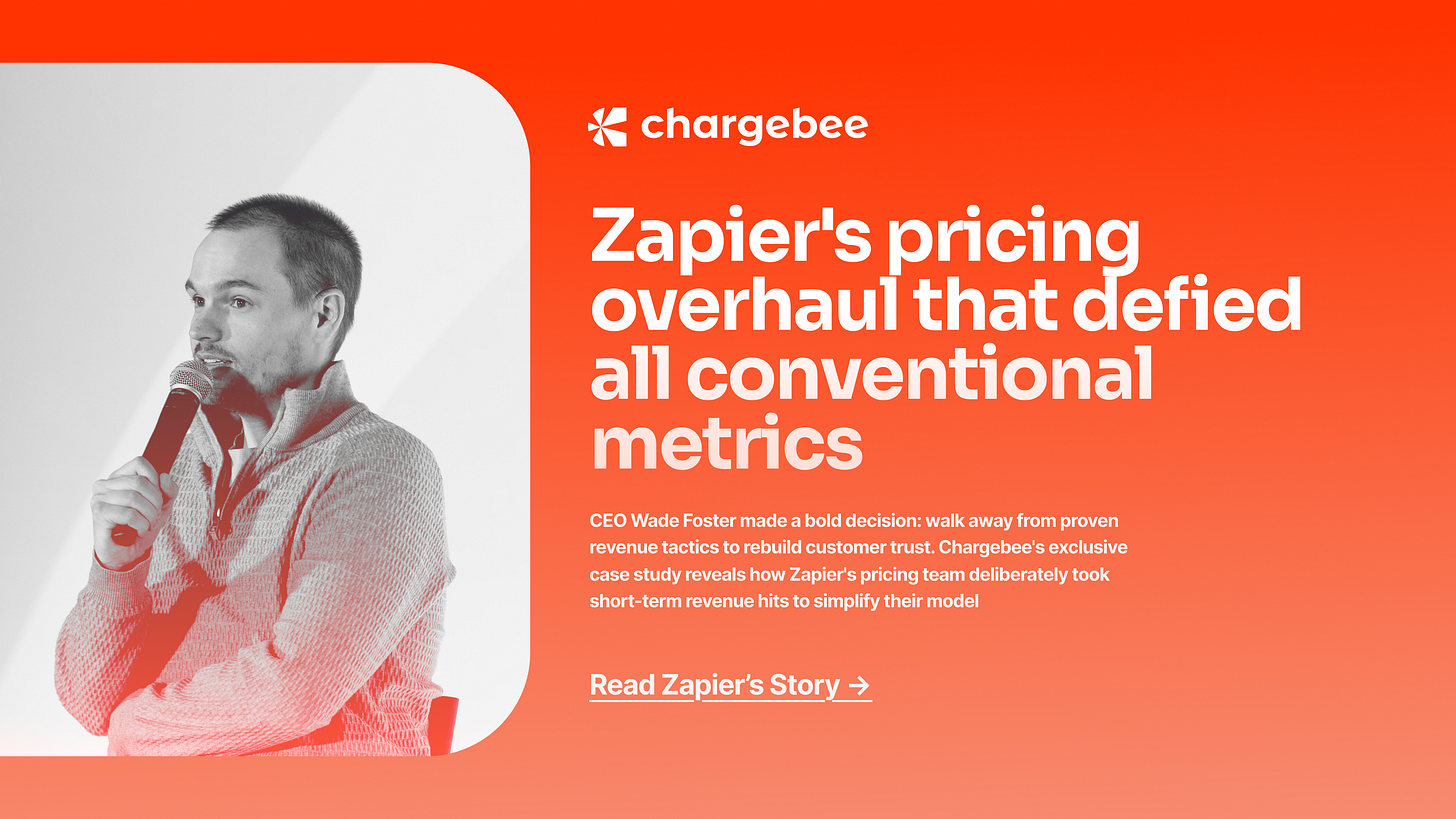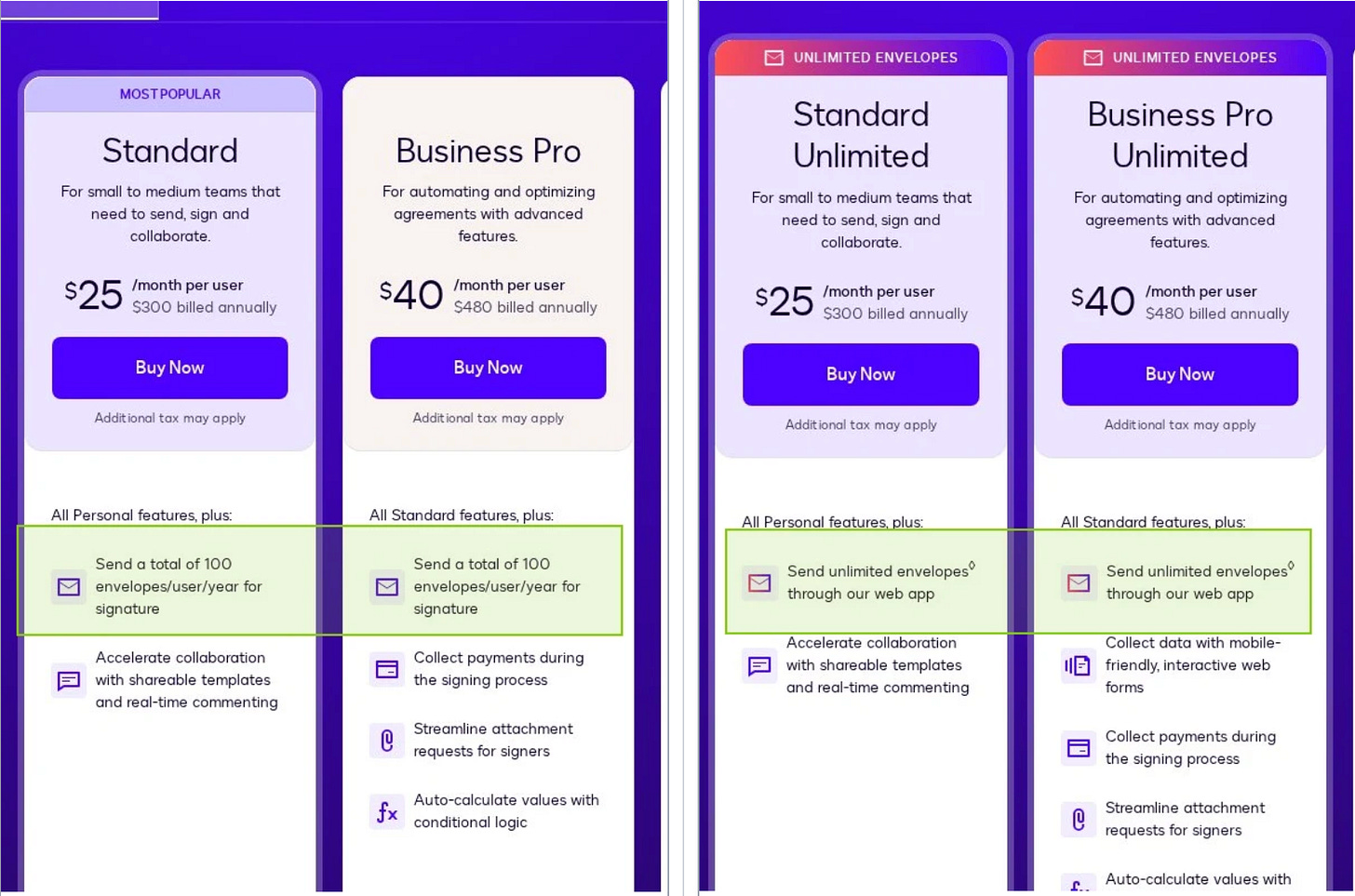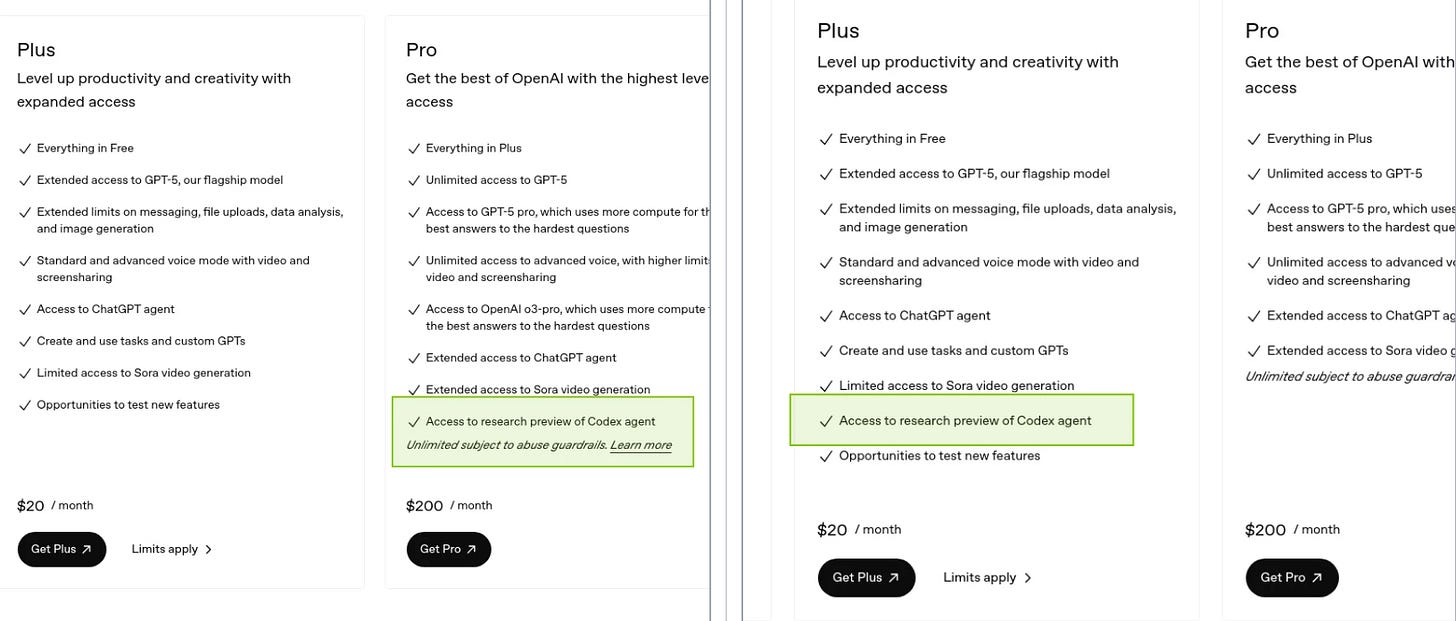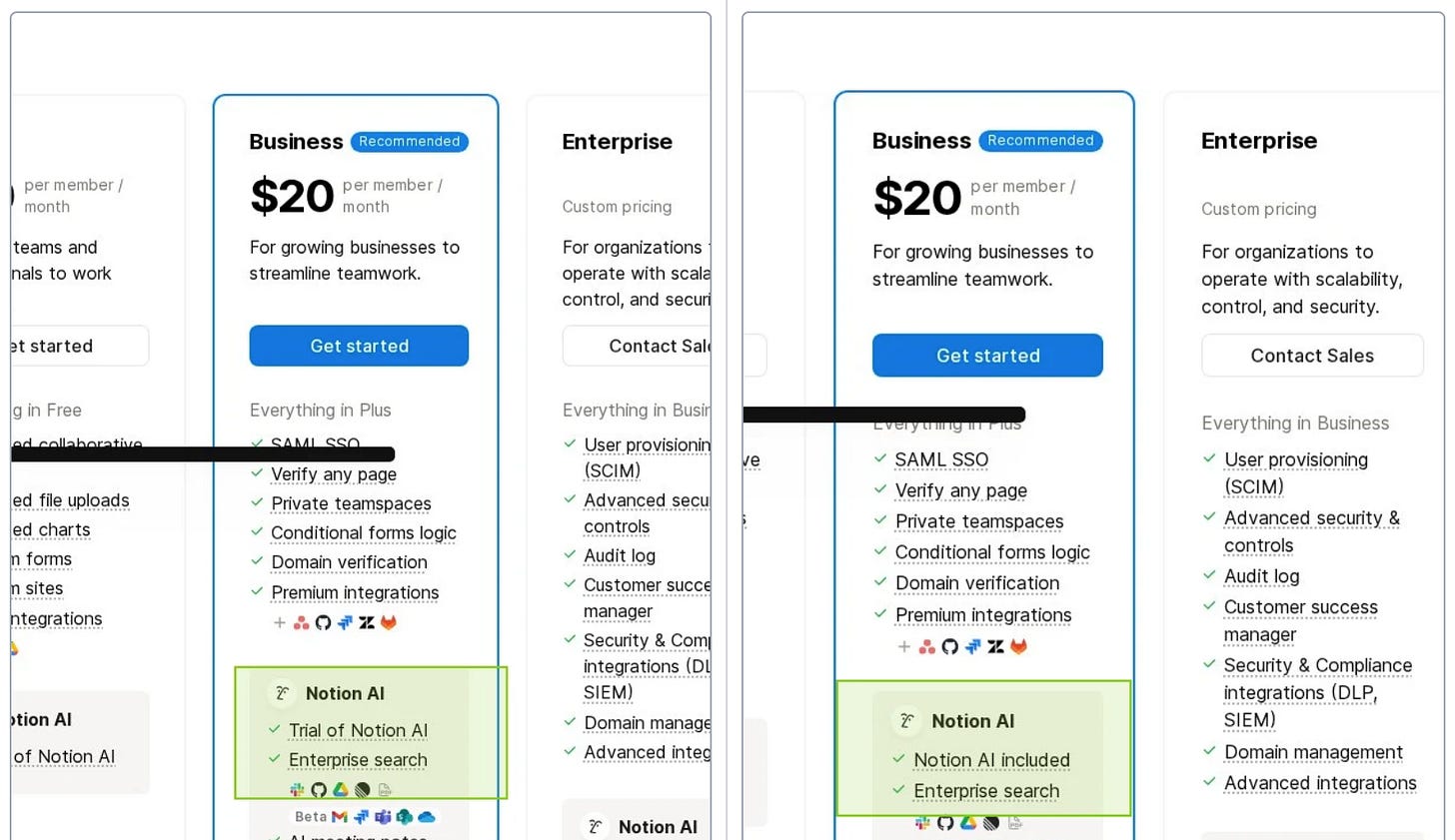Breaking down 5 pricing changes from OpenAI, Notion, Docusign, HubSpot, and LaunchDarkly
Plus: The PricingSaaS News feed is back.
Every week, we provide research and resources to help SaaS leaders make smarter pricing and packaging decisions. Sign up for free to stay ahead of the curve.
🔌 Good Better Best is powered by Chargebee
Despite strong revenue metrics, customer complaints were skyrocketing, usage was declining, and churn was climbing. CEO Wade Foster made a bold decision: walk away from proven revenue tactics to rebuild customer trust.
Chargebee’s exclusive case study reveals how Zapier’s pricing team deliberately took short-term revenue hits to simplify their model, the six core principles that guided their transformation, and the surprising results one year later: including surging usage, lower churn, and a major jump in metered revenue.
This week, we reintroduced the PricingSaaS newsfeed 🎉
The feed surfaces recent pricing changes from 500 of the top players in SaaS (we’ll be adding more companies soon!) To celebrate, we wanted to showcase some of the coolest changes from the last couple weeks.
If you want to dig into recent changes yourself, bookmark competitors, and scroll through their pricing history, sign up for free at PricingSaaS →
On to this week’s pricing changes.
Docusign moved to Unlimited Envelopes for its core plans.
Previously, Docusign limited each user to 100 envelopes per year. This move suggests they’re looking to remove as much friction as possible from customers using the product. This makes a ton of sense given their recent shift towards an Intelligent Agreement Management platform.
One of the key value propositions of IAM is the AI-powered Navigator feature, which makes it easier to store, manage, and analyze agreements. The more agreements you have, the more powerful the use case becomes. So while this may leave some money on the table in the short-term, it’s a long-term play to drive standard eSignature customers to upgrade to IAM.
OpenAI offered the Codex Agent research preview on the Plus plan
Previously, OpenAI offered the preview on the Pro plan, so moving it down to Plus democratizes access, and will give them a better sense of how usage scales to determine how to price it going forward. OpenAI ran a similar playbook with Deep Research, and the preview should serve more or less as a trial experience. It’s clearly a top priority for OpenAI to drive adoption as Codex dukes it out with Claude Code.
Notion made Notion AI a differentiator for the Business plan
Notion has been through a few iterations with Notion AI. They launched it as an add-on that could be added to each plan, and recently integrated it into their core offering. First, they only offered it for Enterprise customers, but are now brining it down into the Business plan, and allowing free and Plus users to check it out with a free trial.
Notion CEO Ivan Zhao recently told the WSJ that 10% of their old margin is going to LLMs. Without understanding exactly what’s going on under the hood, it doesn’t seem like this move would immediately fix that problem. However, driving higher use of Notion AI will certainly make the product stickier, boosting retention over the long run.
🚨 Next Thursday, Ulrik is hosting part 5 of his 6-part webinar series on Agentic AI Pricing. This one will focus on expansion and adoption strategies. Register here →
LaunchDarkly shifted core metrics on the free developer plan.
LaunchDarkly shifted core metrics from Projects, Environments, Service Connections, and MAU to Feature Flags, Session Replays, and Logs and Traces.
This update shifts their metrics further down the value ladder, pushing from inputs to outcomes. These metrics are a better place to play because they’re more aligned with how customers get value out of the product, making for a better story when discussing how pricing scales. Notably, this brings LaunchDarkly’s metrics more closely in line with Statsig, who has documented their value-based pricing philosophy on their pricing page (scroll to FAQ).
HubSpot added Intent Signals as a feature across all Hubs.
HubSpot introduced a new feature called Intent Signals, which allows customers to track key triggers for their top accounts and contacts.
The interesting thing with Intent Signals is that it’s a gateway to HubSpot’s new Credit System. To track companies for Intent Signals, customers need HubSpot Credits. Different events equate to different credit volumes, much like Clay. This essentially gives HubSpot a new expansion lever across every plan of every hub.
Thanks for reading! When you’re ready, here’s how we can help:
PricingSaaS Community: Join the free PricingSaaS Community to get quick answers from experts, real-time pricing data, and access to exclusive events.
PricingSaaS Index: Check out the PricingSaaS Index to track competitors, scroll pricing histories, and create a swipe file of pricing pages for inspiration.
Free Advisory Session: Need a sounding board? Book a 30-minute session. No sales pitch. We’ll provide honest feedback and steer you in the right direction.









